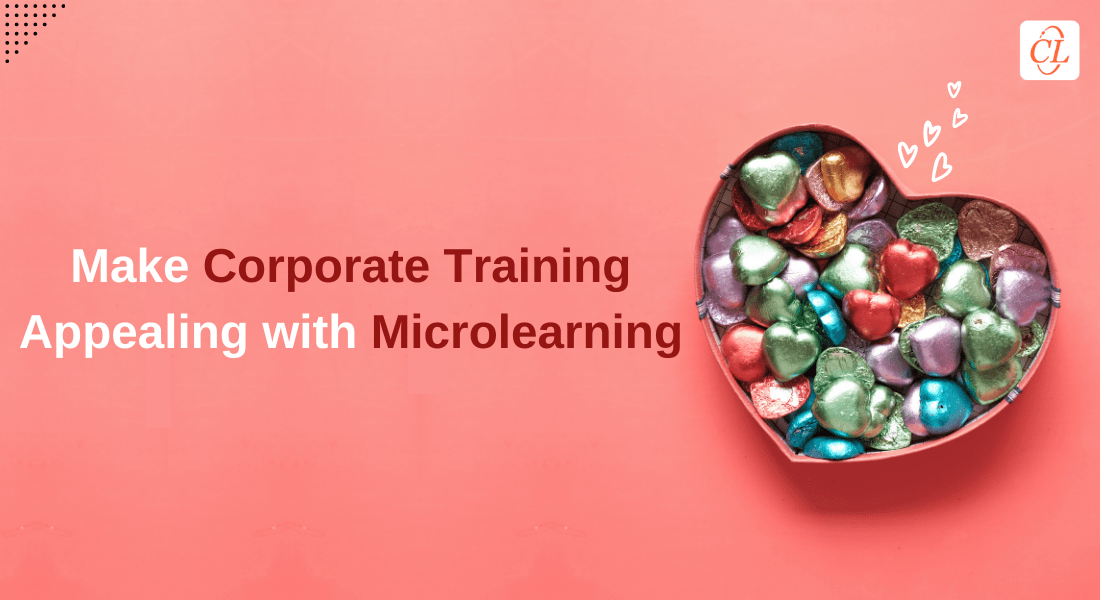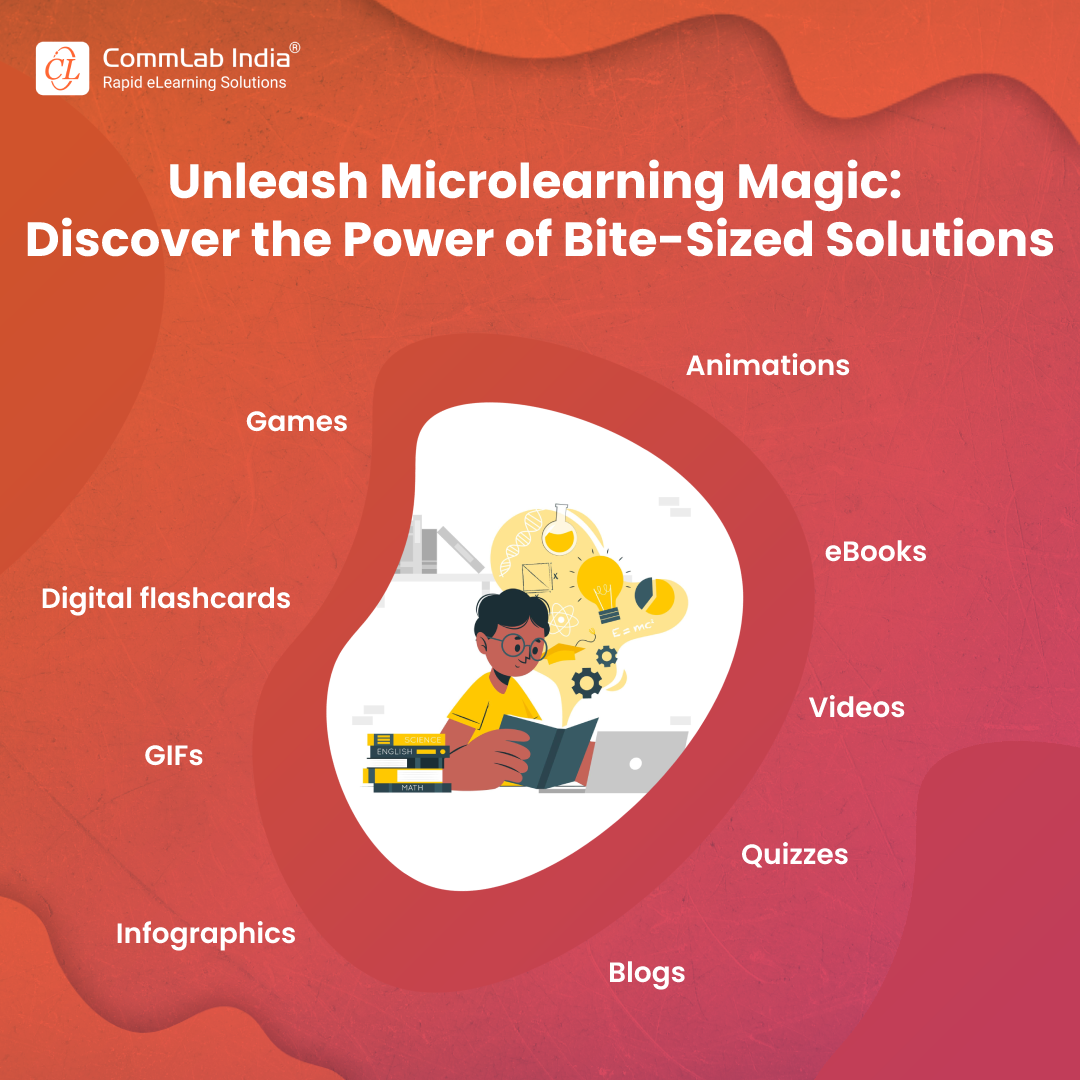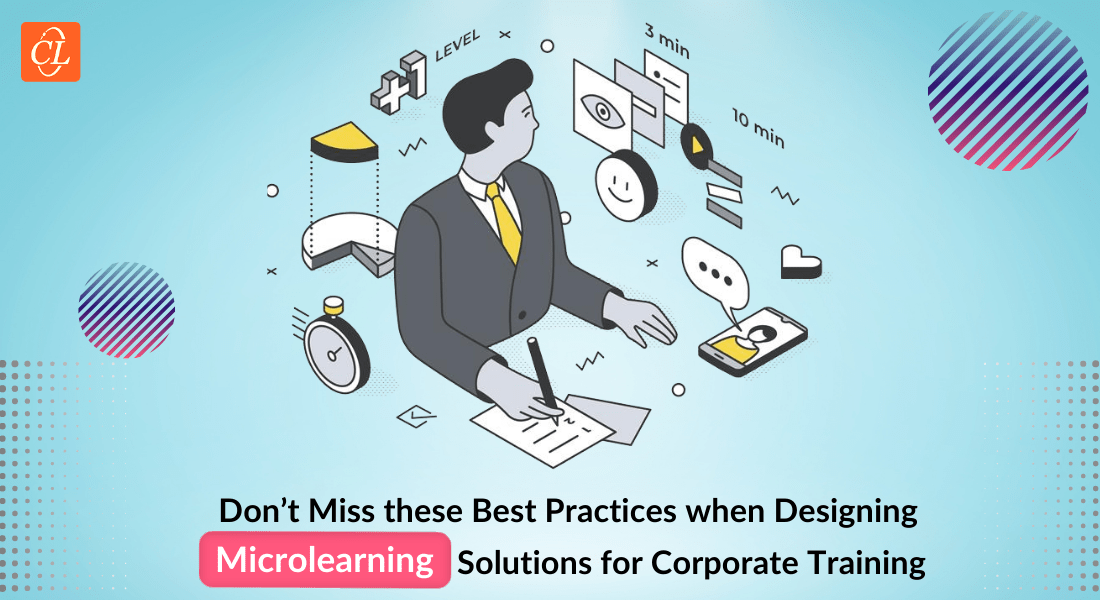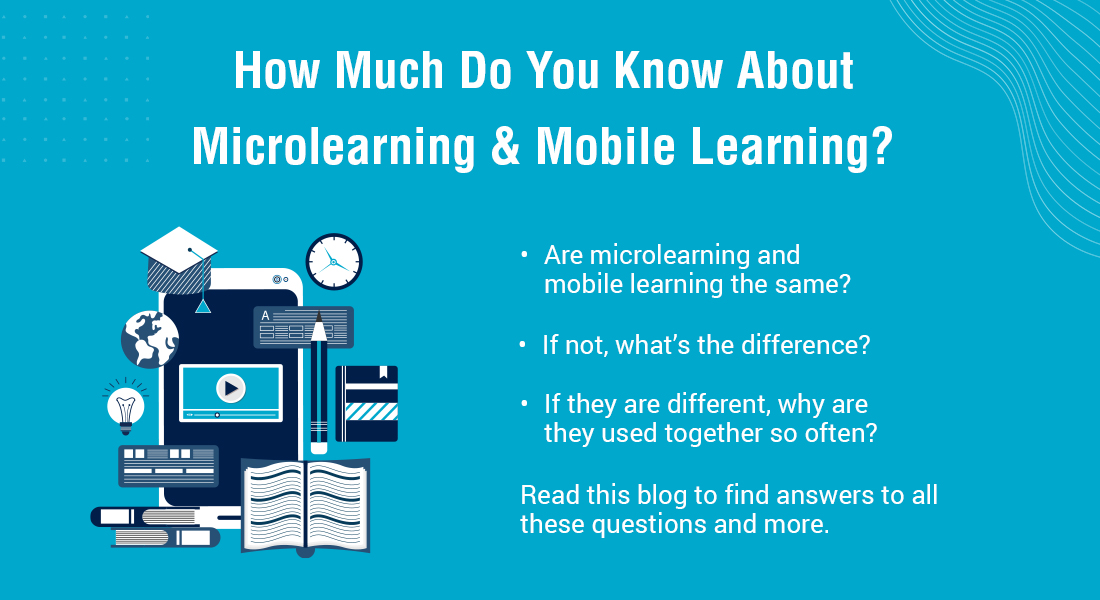How Microlearning Benefits Your Corporate Training?

Microlearning is not just about reducing the quantity of content. Rather, it is about increasing the quality and effectiveness of the learning experience. And in today’s fast-paced world, it can be really difficult to find the time to learn new skills and acquire new knowledge. Well, that’s where microlearning comes in handy. With its focus on bite-sized chunks of information that are easy to consume and understand, microlearning allows learners to learn new things at their own pace and according to their own schedule.

Micro Lessons, Macro Impact!
Here are the top 5 benefits that you shouldn’t miss:
- Makes information easy to digest
- Boosts information retention and recall
- Enables self-paced learning
- Reduces session duration and improves training ROI
- Facilitates learner convenience and flexibility
So whether you’re looking to help your employees to improve their job performance, advance their careers, or simply expand their knowledge, microlearning helps you achieve your goals. Without further delay, let’s take a look at how microlearning benefits your corporate training.
Benefits of Microlearning in Corporate Training
Makes Information Easy to Digest
Imagine having to eat food for the whole year in a single day. That’s absurd, you would say! You’re right. Acquiring large information in a single go makes the learning process boring and leads to cognitive overload. You can tackle this problem by incorporating microlearning into your training. It breaks down complex information into smaller, more manageable chunks that can be easily consumed in a short period of time. This can make it easier for learners to understand and retain the information, as they are not trying to absorb a large amount of information all at once.
Additionally, microlearning leverages various digital assets like videos, infographics, animations, quizzes, etc., which help to keep the learners motivated and engaged. Such interactivities break the text monotony and make the learning process more enjoyable for learners, thereby making it easy for them to consume the information.
Design high-quality, interactive eLearning courses with these amazing instructional design strategies. Check now!
Boosts Information Retention and Recall
We encounter a plethora of information on a daily basis. Needless to say, we don’t remember all of it! And let’s be honest, that’s not even necessary. However, the main problem arises when we fail to recollect the information when it is required. Microlearning helps you beat the forgetting curve to augment better recall and retention. It presents complicated details and processes in smaller chunks, thereby making it easier for learners to process and understand the training material. This helps increase the rate of recall among the learners as they are able to connect the pieces of information they have acquired and retain them more easily.
Apart from that, various microlearning assets like interactive PDFs, audio, quizzes, etc., help create an engaging and immersive learning experience for learners, which promotes retention. Microlearning also makes the remembering process easy and effective as the information is provided in micro lessons, which can be used by employees in their daily work, thereby making the information more long-lasting and easy to recall.
Moreover, you can repurpose the content to create performance support material to offer just-in-time information to the employees, which will help them reinforce the concepts and acquired knowledge as and when required.
Enables Self-paced Learning
“Every student can learn, just not on the same day or in the same way.” This quote by George Evans holds the essence of effective learning. One needs to realize and understand the different learning styles and the pace at which the learners acquire information in the most effective way. With that said, learning at their own pace often helps the learners retain information for a longer duration and yields desirable results in terms of productivity and performance. With microlearning, learners don’t need to be in a hurry or slow down to match the instructor’s speed of conveying information.
It facilitates self-paced learning by providing learners with the ability to control the rate at which they consume the material. Because microlearning lessons are typically short and focused on a specific topic or concept, learners can move through the content at their own pace, spending more time on topics that they find more challenging and moving more quickly through those lessons and concepts that they find easier. This can be especially useful for learners who have busy schedules or who need to balance their learning with other responsibilities, as they can fit the microlearning material into their available time as needed.
Reduces Session Duration and Improves Training ROI
Reduced attention spans are the new normal. Yes! The efficiency of lengthy eLearning courses is just hanging by a thread. Rather long session duration leads to boredom and distraction among the learners. Microlearning takes the bull by the horns and offers viable, effective results. It reduces the course duration as it focuses on specific, targeted topics or concepts rather than trying to cover a broad range of material in a single course. Microlearning adheres to the single learning objective. This allows learners to master the micro chunks of material, instead of having to absorb a large amount of information all at once.
As microlearning focuses on the need-to-know content, the time taken to cover the eLearning material is significantly reduced. With reduced course duration, it fits into the learners’ schedules more easily and enables them to complete their training more quickly, which provides them with more free time to focus on other tasks or responsibilities. Additionally, by providing learners with targeted, relevant material, microlearning also helps to increase retention and improve the effectiveness of the training, which increases the training ROI.
Facilitates Learner Convenience and Flexibility
Taking into consideration modern learning habits, convenience and flexibility play an integral role in determining the effectiveness of corporate training. It does make sense! If you are asked to focus on training while you have a deadline to meet, training won’t be that fruitful. Right? On the other hand, if you have the choice to finish off the priority task and then take up the training course, it is certain to provide better results.
Microlearning offers this convenience and flexibility by allowing learners to access the training material anytime and anywhere. Because microlearning content is concise, accurate, and focused on specific learning objectives, learners can access the courses as and when needed, rather than having to commit to a set schedule or location. Moreover, microlearning can be delivered through various platforms, such as a learning management system (LMS), mobile phone, etc., which makes it even more convenient for learners as they can access the learning material on their own devices, such as a smartphone or tablet.
Wrapping It Up!
Although micro in size, these nuggets of information are invaluable assets to augment the efficiency of your corporate training. Welcome to the world of microlearning! It is a powerful tool that helps your employees to learn new skills and acquire new knowledge quickly and efficiently, thereby boosting their performance and productivity. This in turn accelerates your company’s growth and goal achievement. With benefits clear as a sunny day, don’t let reasons like limited time or resources hold you back. Give microlearning a try and set out on a winning spree! Check out our free eBook to know where microlearning fits in your learning strategy.
Editor’s note: This post was originally published in January 2023 and has been updated for comprehensiveness.





